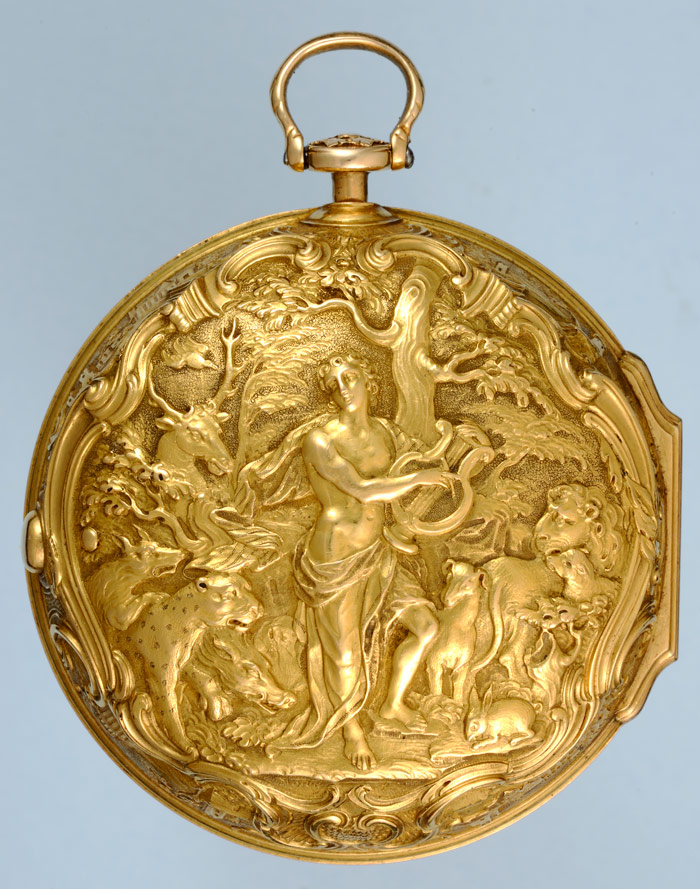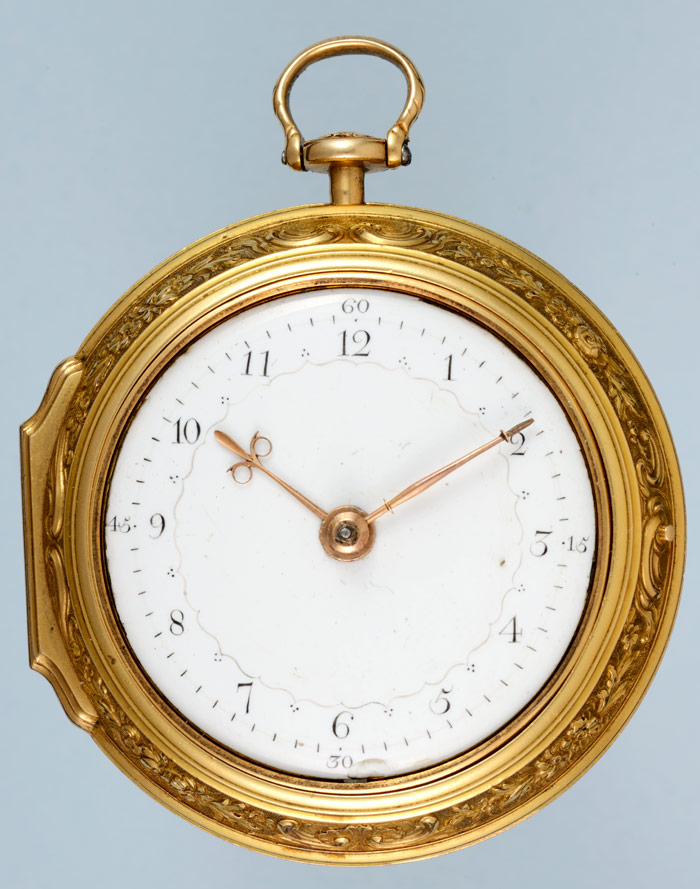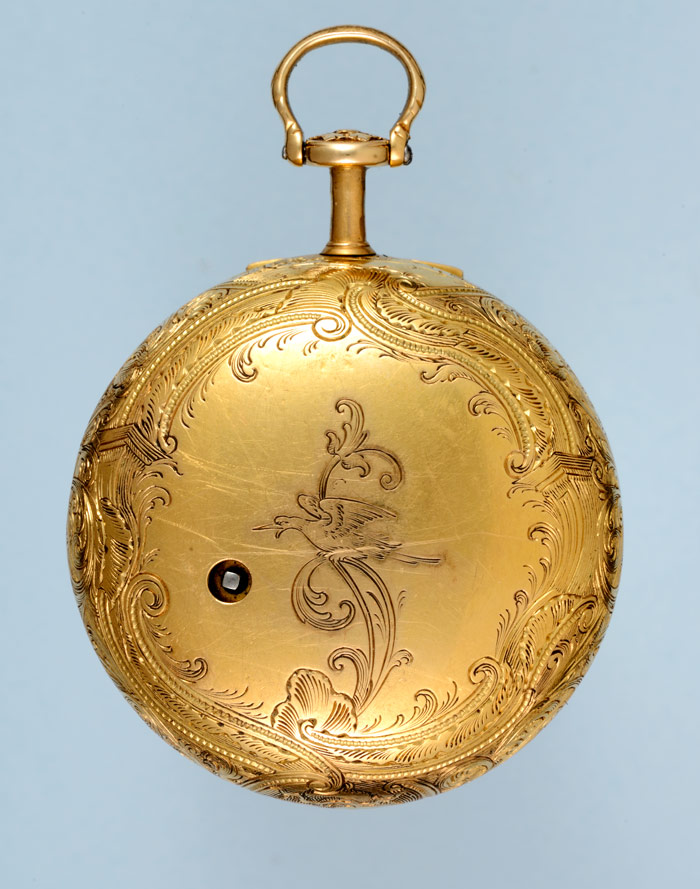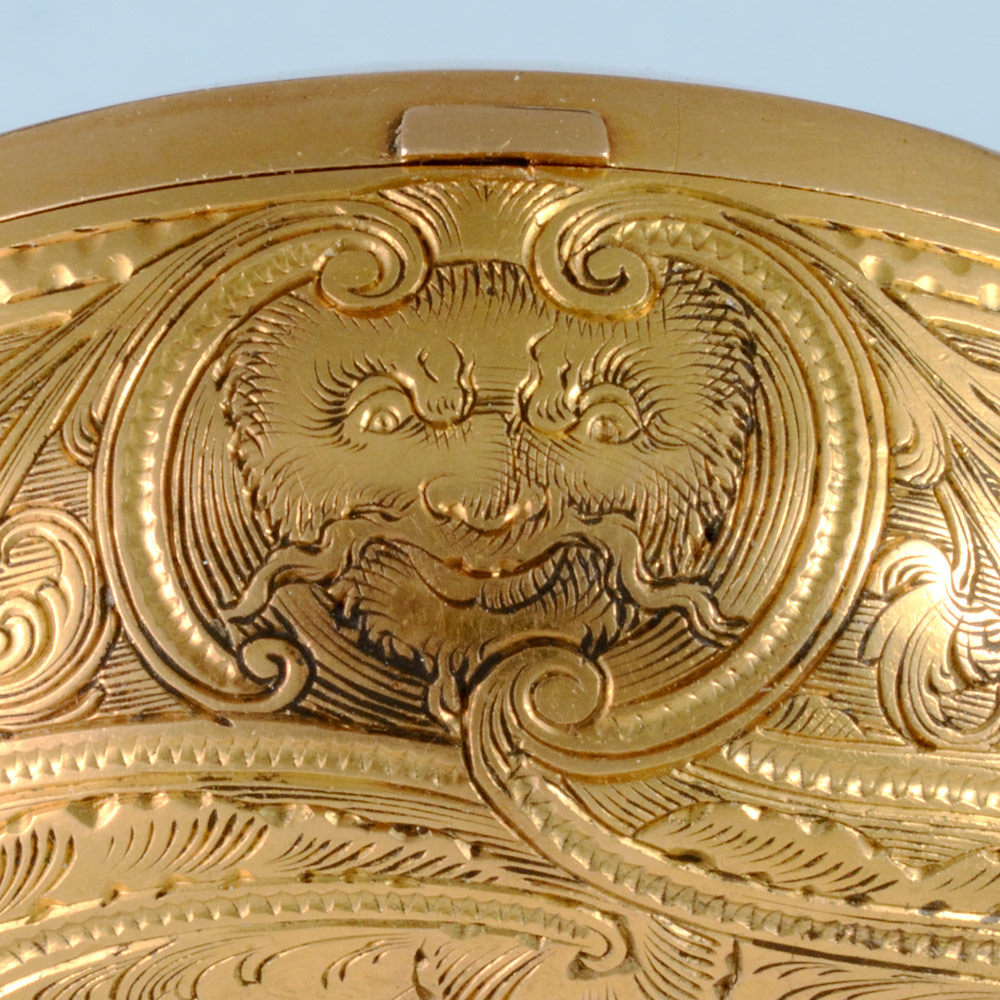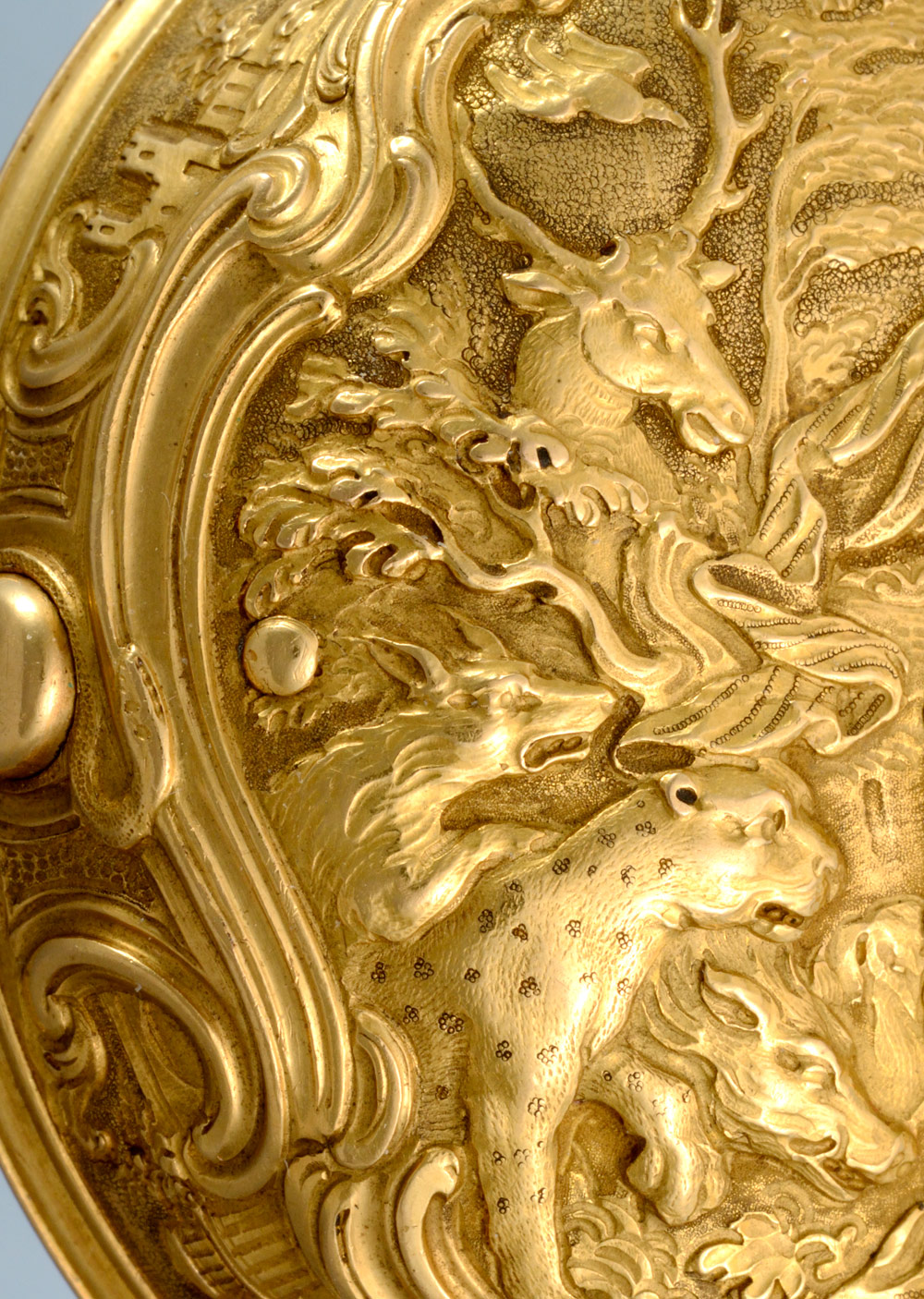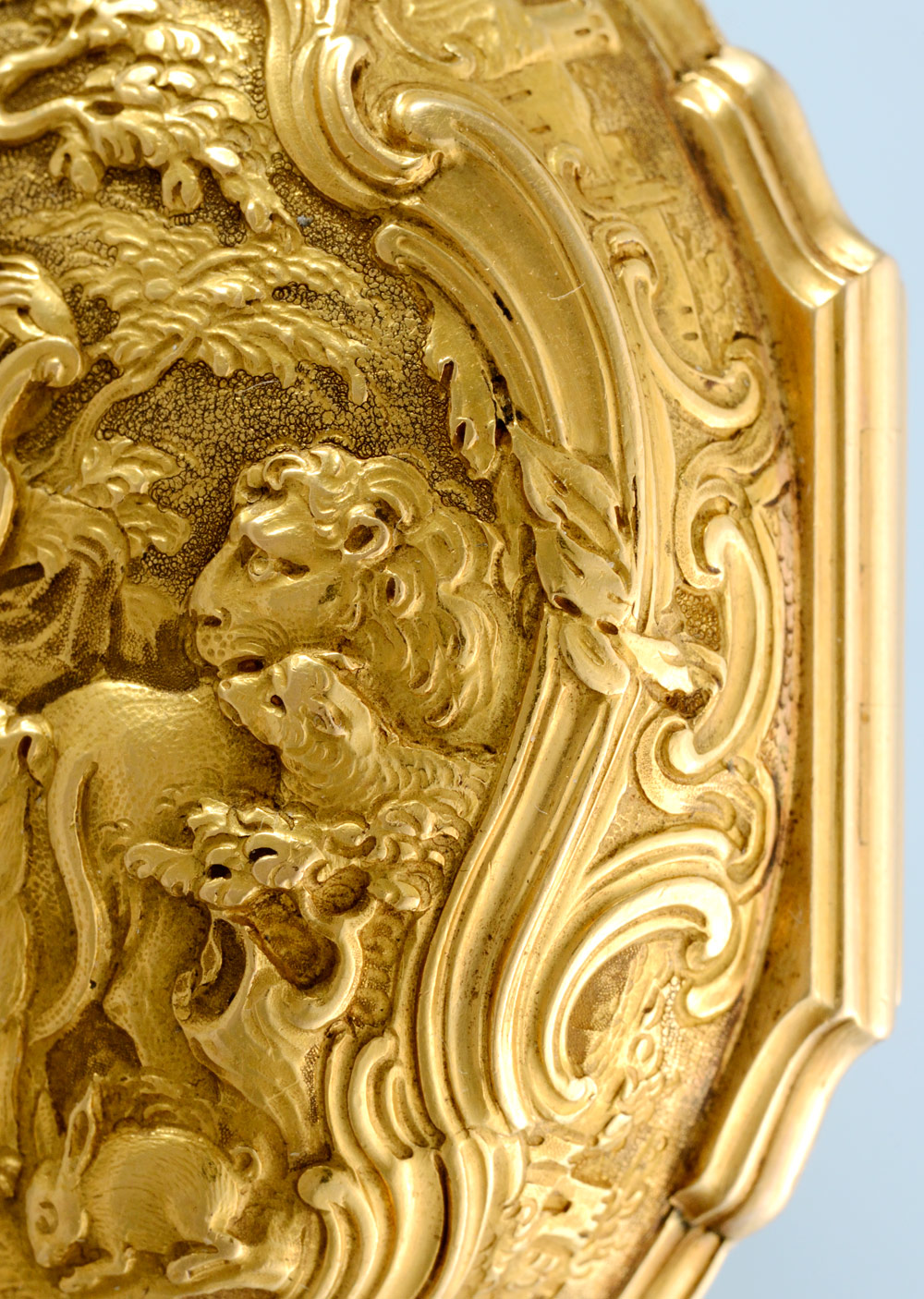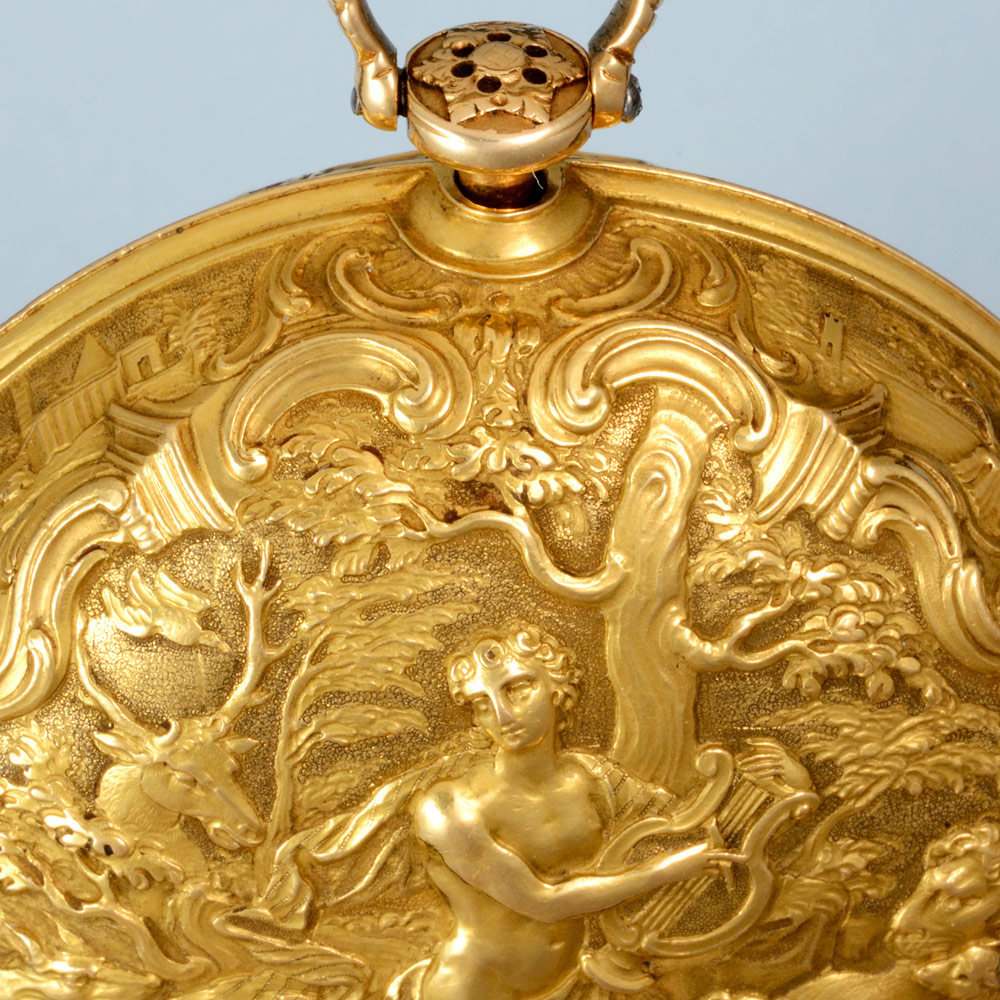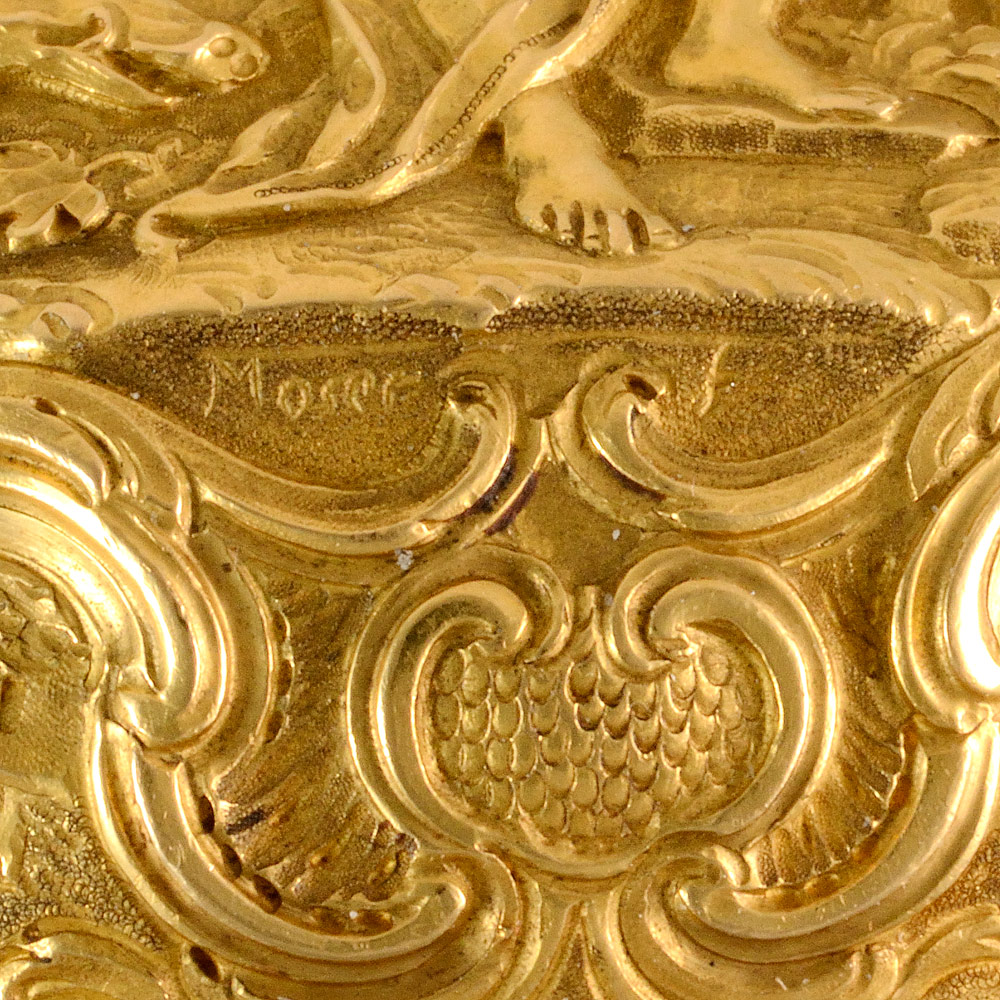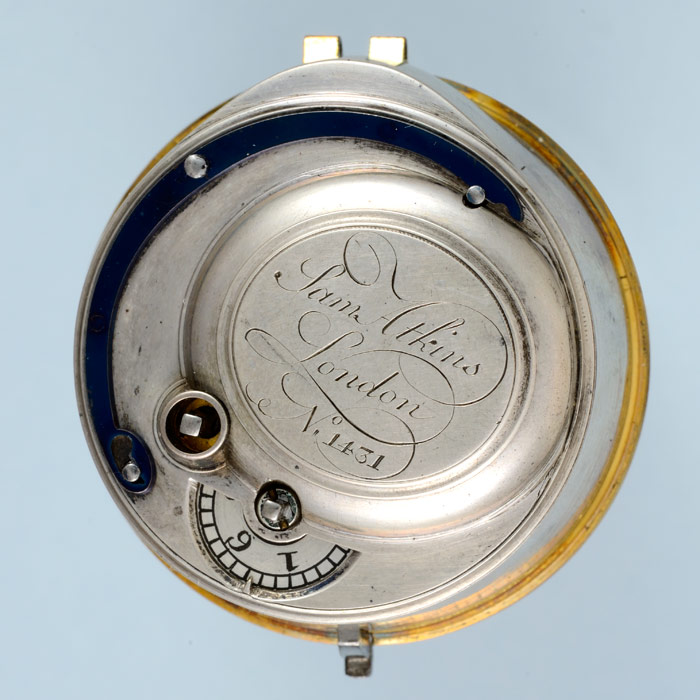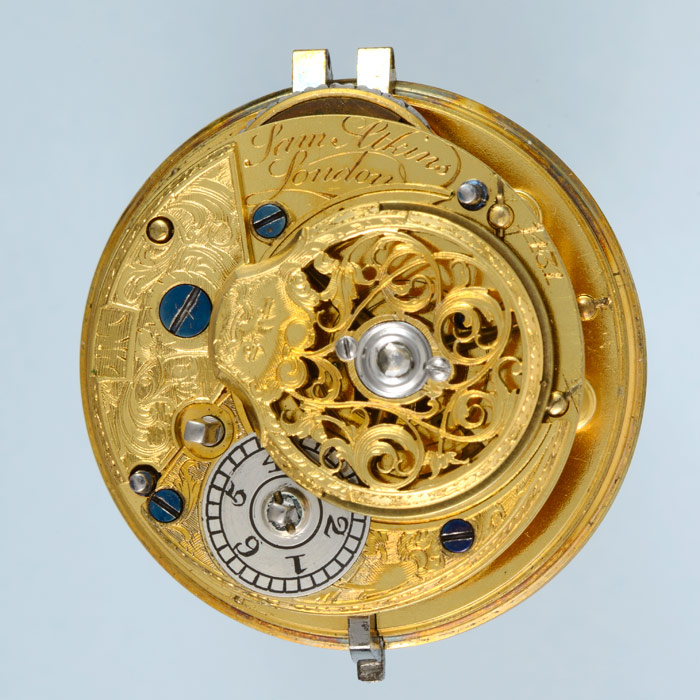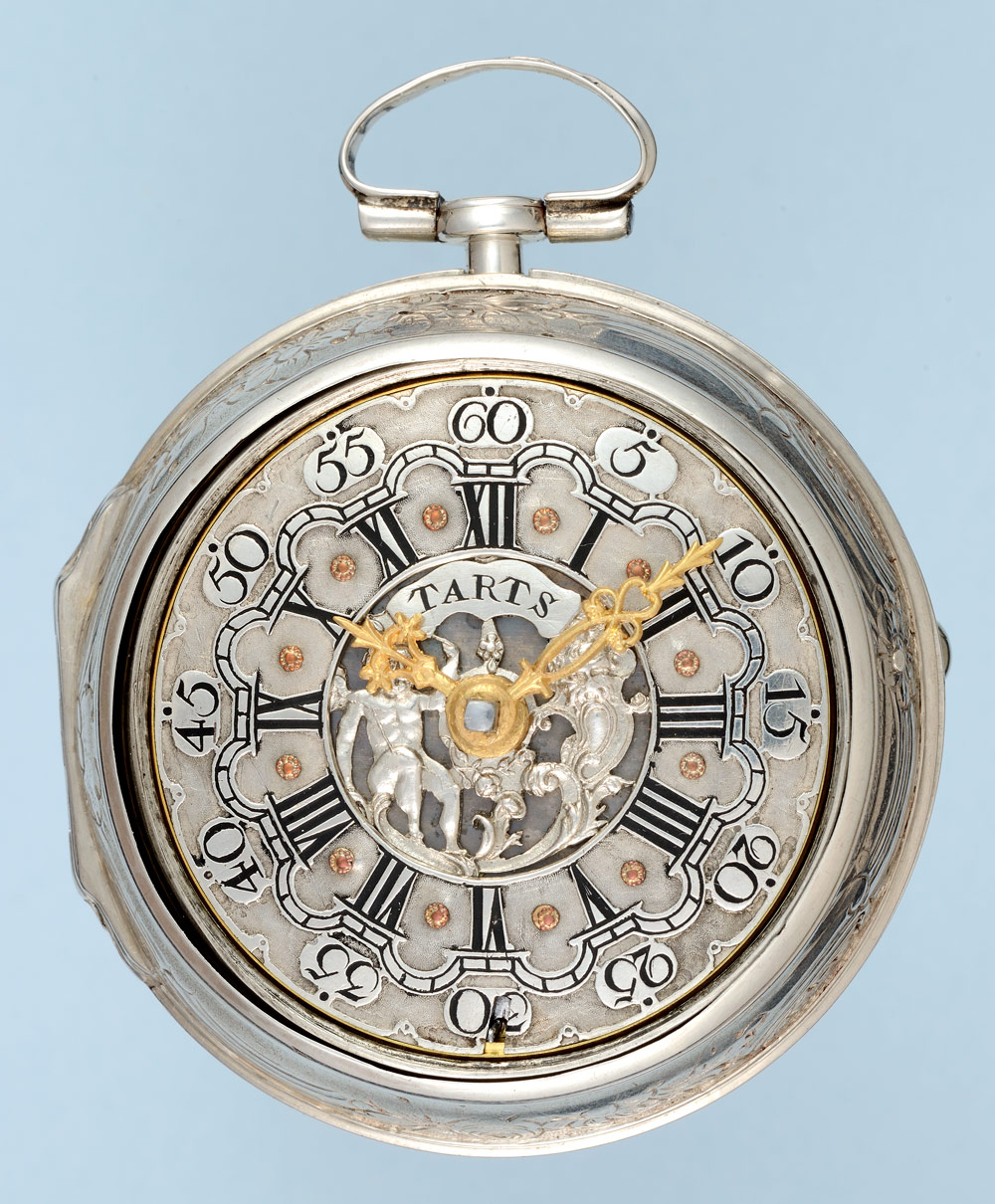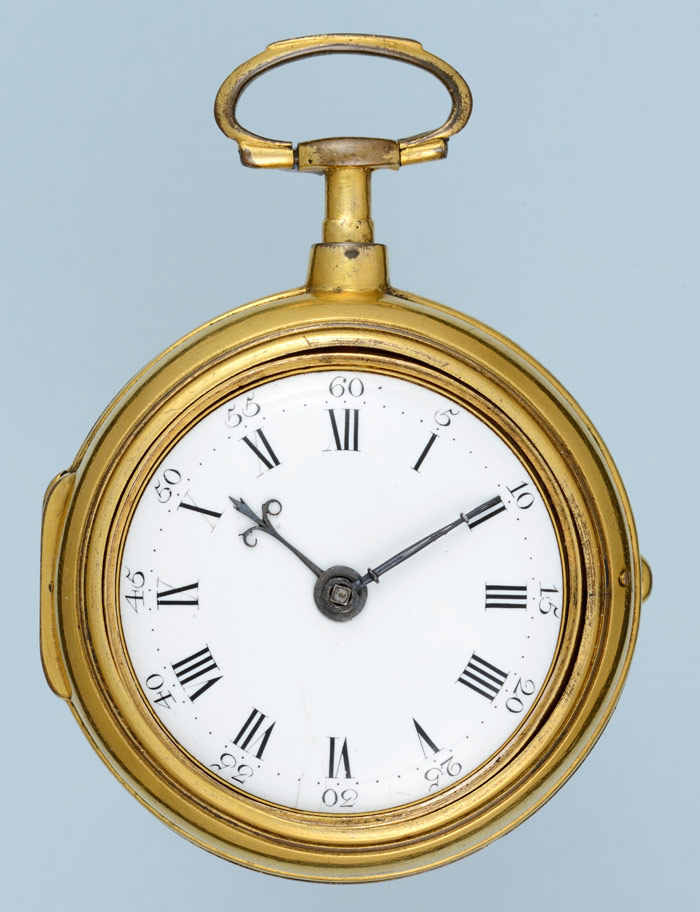A9724
Fine Gold Repousse Pair Case by Moser
£51,000.00
Hallmarked London 1744
Out of stock
Description
A mid 18th Century English verge in very fine gold repousse pair cases by Moser. Full plate fire gilt movement with signed and numbered silver dust cover. Pierced and engraved masked cock with large diamond endstone in a polished steel setting, silver regulator disc. Fusee and chain, turned pillars. Plain three arm steel balance, blue steel spiral hairspring. Unusual white enamel dial with delicate Arabic numerals around a fine tracery border, gold beetle and poker hands. Gold inner case unusually also decorated with foliate engraving around the edge, a grotesque mark at the base and small scene around the pendant. In the centre a bird perched in reeds surrounded by a symmetrical border, maker's mark “EB” with fleur dis lis above. Superbly worked 22 carat outer case of chased and engraved repousse work signed “Moser f” at the feet of the figure. Symmetrical repousse border to the main scene which depicts a musician playing a lyre surrounded by animals, including a stag, boar, wolf, lamb, lion and leopard. Outside the border a frieze of small landscapes and buildings
“The wolf also shall dwell with the lamb, and the leopard shall lie down with the kid; and the calf and the young lion and the fatling together; and a little child shall lead them. And the cow and the bear shall feed; their young ones shall lie down together: and the lion shall eat straw like the ox.“
George Michael Moser was born in Schaffhausen on January 17, 1706. He studied chasing and gilding under his father Michael, a coppersmith. He moved to London in 1726 and worked for John Valentine Haidt, goldsmith and watch chaser. By 1737 he was working on his own account at Craven Buildings off Drury Lane. In addition to chasing he also produced fine enamel cases of which only about twenty are known to survive. He designed the great seal of George III and painted enamel portraits of the royal children for Queen Charlotte. Moser continued to work at least until the late 1770's, and was active for the Royal Academy until the end of his life. On January 30, 1783, the “Gentleman's Magazine” reported that Moser “was followed to his grave in grand funeral pomp by all the capital artists, Sir Joshua Reynolds at their head as chief mourner, Sir William Chambers, etc. Ten mourning coaches, besides two gentlemen's coaches, were in the procession”. In The Art of the Gold Chaser in Eighteenth-Century London, Richard Edgcumbe devotes over 40 pages of text to Moser's work in addition to the many illustrations included. Unlike most of Moser's work this case graces the movement from a lesser known watchmaker. Other examples house movements by eminent watchmakers of the period such as Graham, Delander, Mudge, Ellicott and Vulliamy. It is also most unusual for the inner case to be engraved on a timepiece. Casemaker either Edward Bradshaw or Edward Branstone Bayley.




